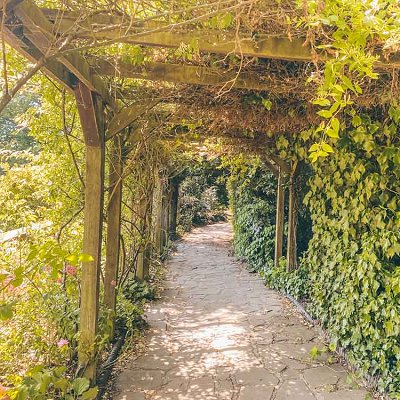
Like us on Facebook
PLACE NAMES


 
|
|
Streatham
|

|
|
Streatham is a busy residential suburb known for recreational spots like the Ice and Leisure Centre, with its Olympic-size ice-skating rink. Tooting Bec Lido is a massive outdoor pool with a cafe and picnic area, while woodlands, meadows, and a playground are the draw at Streatham Common. The bustling High Road offers unpretentious Asian, Italian, and Middle Eastern dining, and is home to the Hideaway jazz venue.
Streatham was in Surrey before becoming part of the County of London in 1889, and then Greater London in 1965. The area is identified in the London Plan as one of 35 major centres in Greater London.
Streatham means "the hamlet on the street". The street in question, the London to Brighton Way, was the Roman road from the capital Londinium to the south coast near Portslade, today within Brighton and Hove. It is likely that the destination was a Roman port now lost to coastal erosion, which has been tentatively identified with 'Novus Portus' mentioned in Ptolemy's Geographia. The road is confusingly referred to as Stane Street (Stone Street) in some sources and diverges from the main London-Chichester road at Kennington.
After the departure of the Romans, the main road through Streatham remained an important trackway. From the 17th century it was adopted as the main coach road to Croydon and East Grinstead, and then on to Newhaven and Lewes. In 1780 it then became the route of the turnpike road from London to Brighton, and subsequently became the basis for the modern A23. This road (and its traffic) have shaped Streatham's development.
Streatham's first parish church, St Leonard's, was founded in Saxon times but an early Tudor tower is the only remaining structure pre-dating 1831 when the body of the church was rebuilt. The mediaeval parish covered a wider area including Balham and Tooting Bec.
Streatham appears in Domesday Book of 1086 as Estreham. It was held by Bec-Hellouin Abbey (in Normandy) from Richard de Tonbrige. Its domesday assets were: 2 hides, 1 virgate and 6½ ploughlands of cultivated land and 4 acres (1.6 ha) of meadow and herbage (mixed grass and bracken). Annually it was assessed to render £4 5s 0d to its overlords.
Streatham village remained largely unchanged until the 18th century, when its natural springs, known as Streatham Wells, were first celebrated for their health-giving properties. The reputation of the spa, and improved turnpike roads, attracted wealthy City of London merchants and others to build their country residences in Streatham.
In spite of London's expansion, a limited number of developments took place in the village in the second half of the nineteenth century, Streatham Vale sprung up to the South later still and the small parade of shops by Streatham Common Station has become known colloquially as Streatham Village.
Wellfield Road, which had previously been known as Leigham Lane, was renamed to reflect its role as the main route from the centre of Streatham to one of the well locations. Another mineral well was located on the south side of Streatham Common, in an area that now forms part of The Rookery, where it can still be seen and visited within the formal gardens.
In the 1730s, Streatham Park, a Georgian country mansion, was built by the brewer Ralph Thrale on land he bought from the Lord of the Manor - the fourth Duke of Bedford. Streatham Park later passed to Ralph's son Henry Thrale, who with his wife Hester Thrale entertained many of the leading literary and artistic characters of the day, most notably the lexicographer Samuel Johnson. The dining room contained 12 portraits of Henry's guests painted by his friend Joshua Reynolds. These pictures were wittily labelled by Fanny Burney as the Streatham Worthies.
Streatham Park was later leased to Prime Minister Lord Shelburne, and was the venue for early negotiations with France that led to the Peace Treaty of 1783. Streatham Park was demolished in 1863.
|
 Feel free to Email me any additions or corrections Feel free to Email me any additions or corrections
LINKS AVAILABLE TO YOUR SITE
| |





